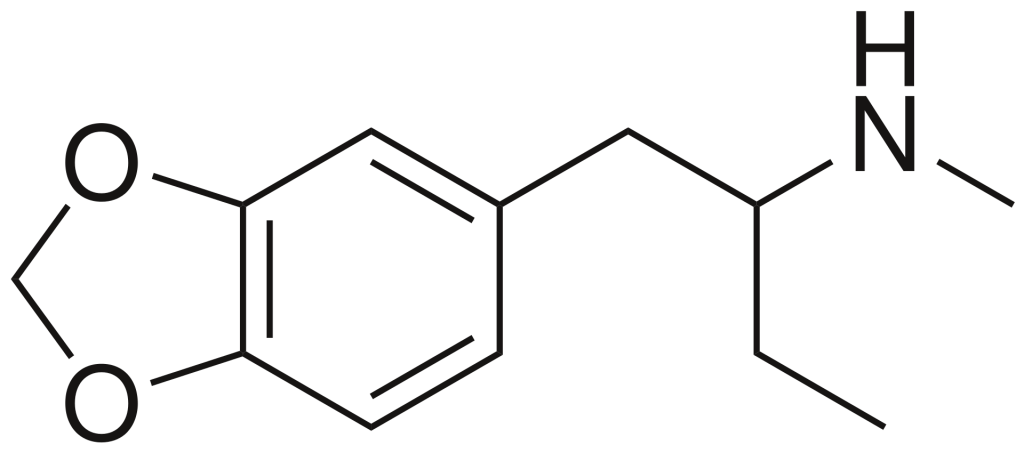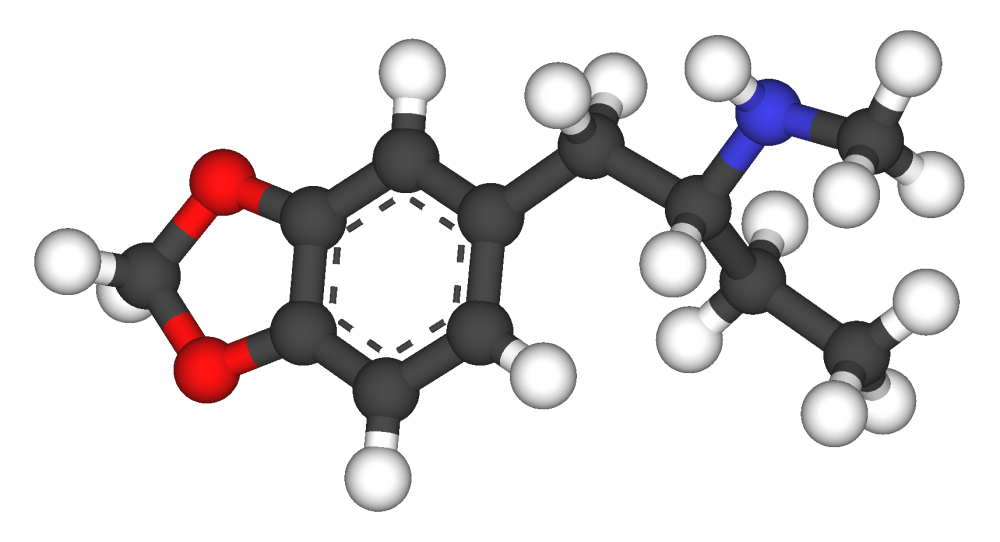As of my last knowledge update in September 2021, MBDB, known as “Methylbenzodioxolylbutanamine,” was a relatively obscure designer drug and research chemical. It belongs to the family of substituted amphetamines and has been explored for its psychoactive properties. However, its market situation may have evolved since then.
The market for MBDB was niche, with a limited online presence. A few vendors and sellers catering to the research chemical community offered MBDB for sale through specialized online platforms. These vendors typically marketed it as a research chemical rather than for human consumption to circumvent legal restrictions.
The demand for MBDB was not as significant as more well-known substances like MDMA or LSD, and its popularity among recreational users was relatively low. Researchers interested in studying novel compounds’ effects and potential therapeutic applications occasionally purchased MBDB.
It’s essential to note that the legal status of designer drugs and research chemicals can change rapidly, with many jurisdictions cracking down on their sale and possession due to safety concerns. Therefore, the market situation of MBDB may have shifted considerably since my last update, with potential legal and regulatory changes affecting its availability. Always ensure compliance with local laws and regulations when dealing with such substances.
Contents
- 1 Summary
- 2 Legal Status
- 3 FAQ
- 3.1 1. What is MBDB?
- 3.2 2. What are some street names for MBDB?
- 3.3 3. Is MBDB the same as MDMA?
- 3.4 4. Is MBDB a controlled substance?
- 3.5 5. What are the effects of MBDB?
- 3.6 6. What is the recommended dosage for MBDB?
- 3.7 7. How long do the effects of MBDB last?
- 3.8 8. Is MBDB safe to use?
- 3.9 9. Is MBDB used for any legitimate medical purposes?
- 4 References
Summary
1,3-Benzodioxolyl-N-methylbutanamine, or MBDB or Methyl-J, belongs to the entactogen class within the phenethylamine chemical category. It shares structural similarities with MDMA and is recognized by the street names Eden and Methyl-J. MBDB is characterized by a ring-substituted amphetamine structure with a methylene deoxy substitution at positions 3 and 4 on the aromatic ring, a defining feature among MDMA analogues, collectively referred to as “entactogens” to distinguish them from traditional psychostimulant amphetamines lacking such substitutions.
What sets MBDB apart from MDMA is the presence of an ethyl group rather than a methyl group at the alpha carbon, while other molecular components remain identical. Such alpha carbon modification is unusual among substituted amphetamines. In terms of pharmacology, MBDB exhibits an inhibitory effect on serotonin (5-HT) with an IC50 value of 784 nM, along with weaker interactions with dopamine (7825 nM) and norepinephrine (1233 nM).
Initially synthesized by pharmacologist David E. Nichols, MBDB was later researched by Alexander Shulgin and documented in PiHKAL: A Chemical Love Story. PiHKAL states a typical MBDB dose ranges from 180 to 210 mg, with an unknown relationship to body mass. Its effects last 4-6 hours, followed by lingering after-effects for 1-3 hours.
MBDB was developed as a non-psychedelic entactogen with a milder impact on dopamine than other entactogens like MDMA. It produces MDMA-like effects, including enhanced sociability, reduced inhibitions, heightened empathy, improved mood, and mild euphoria. However, MBDB tends to generate less intense euphoria, psychedelic experiences, and stimulation when compared to MDMA.

| Identifiers | |
|---|---|
| IUPAC name | |
| CAS Number | 135795-90-3 |
|---|---|
| PubChem CID | 124844 |
| ChemSpider | 111153 |
| UNII | E8HMQ4F9JQ |
| CompTox Dashboard (EPA) | DTXSID70894039 |
| Chemical and physical data | |
| Formula | C12H17NO2 |
| Molar mass | 207.273 g·mol−1 |

Legal Status
In contrast to MDMA, MBDB has not been placed on the international scheduling list by the United Nations Convention on Psychotropic Substances. The World Health Organization’s Expert Committee on Drug Dependence, during its thirty-second meeting in September 2000, assessed MBDB and recommended against its inclusion. Their evaluation of MBDB revealed the following:
While MBDB shares structural and pharmacological similarities with MDMA, available data suggest that its stimulant and euphoric effects are less pronounced than those of MDMA. There have been no reported adverse or toxic effects in humans resulting from MBDB use. Law enforcement data concerning illicit MBDB trafficking in Europe indicate a potential decline in availability and abuse, following a peak during the latter part of the 1990s. Therefore, the Committee concluded that the abuse potential of MBDB does not pose a significant risk to public health, and as such, it did not warrant international control or scheduling. Consequently, MBDB was not recommended for scheduling.
However, the regulatory status of MBDB varies by country:
- In Australia, MBDB is classified as a Schedule 9 Prohibited substance under the Poisons Standard (October 2015). This classification means that its manufacture, possession, sale, or use is generally prohibited by law, except when required for medical, scientific, analytical, teaching, or training purposes, with the approval of relevant health authorities.
- MBDB is listed in Schedule 1 of the Controlled Substances Act in Russia.
- In Sweden, MBDB is categorized as a “health hazard” under the Act on the Prohibition of Certain Goods Dangerous to Health as of February 25, 1999. This classification makes it illegal to sell or possess MBDB in the country.
FAQ
1. What is MBDB?
- MBDB, short for 1,3-Benzodioxolyl-N-methylbutanamine, is a chemical compound belonging to the entactogen class within the phenethylamine family. It shares some structural similarities with MDMA and is sometimes called a research chemical.
2. What are some street names for MBDB?
- Common street names for MBDB include Eden and Methyl-J.
3. Is MBDB the same as MDMA?
- No, MBDB is not the same as MDMA. While they share some structural similarities and belong to the same chemical class, they have distinct effects and characteristics. MBDB tends to have milder stimulant and euphoric effects compared to MDMA.
4. Is MBDB a controlled substance?
- The legal status of MBDB varies by country. It is a controlled substance in some places, while in others, it may not be scheduled. Always check local laws and regulations regarding its legality.
5. What are the effects of MBDB?
- MBDB produces effects similar to MDMA, such as enhanced sociability, reduced inhibitions, increased empathy, improved mood, and mild euphoria. However, these effects are generally less intense compared to MDMA.
6. What is the recommended dosage for MBDB?
- The recommended dosage of MBDB can vary, but according to PiHKAL (Phenethylamines I Have Known and Loved), a typical dose ranges from 180 to 210 milligrams. The appropriate dosage relative to body mass needs to be defined.
7. How long do the effects of MBDB last?
- The effects of MBDB typically last for 4 to 6 hours, with noticeable after-effects lasting for 1 to 3 hours.
8. Is MBDB safe to use?
- The safety of MBDB has yet to be extensively studied, and its use may carry risks, including potential adverse effects. Additionally, the purity and quality of the substance can vary when obtained from illicit sources, increasing the risk of harm. It is crucial to exercise caution and prioritize your health and safety.
9. Is MBDB used for any legitimate medical purposes?
- MBDB is not approved for medical use and is primarily considered a research chemical. Its potential therapeutic applications have yet to be well-explored.
References
- MBDB. Erowid Center.
- Lai FY, Erratico C, Kinyua J, Mueller JF, Covaci A, van Nuijs AL (October 2015). “Liquid chromatography-quadrupole time-of-flight mass spectrometry for screening in vitro drug metabolites in humans: investigation on seven phenethylamine-based designer drugs” (PDF). Journal of Pharmaceutical and Biomedical Analysis. 114: 355–75. doi:10.1016/j.jpba.2015.06.016. hdl:10067/1278220151162165141. PMID 26112925.
- WHO Expert Committee on Drug Dependence (2001). “Thirty-second Report, Technical Report Series 903” (PDF).
- “Poisons Standard”. Federal Register of Legislation. Australian Government. October 2015.
- “Svensk författningssamling” [Swedish Code of Statutes] (PDF) (in Swedish). Notisum AB.